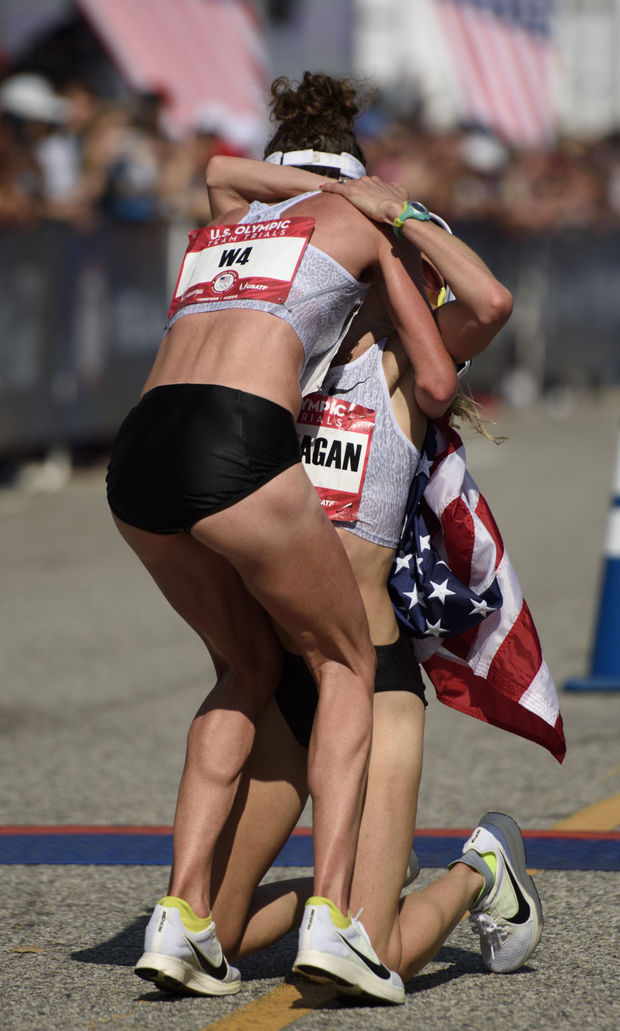“When you work together with teammates, you can do remarkable things. If you work alone, you leave a lot of victories on the table. Collaboration has a multiplying effect on everything you do because it releases and harnesses not only your skills but also those of everyone on the team.”
– John Maxwell
The Bellingham Distance Project was developed to support a community of women who held similar goals, similar drives, similar attitudes toward success and the process towards, and though we came together with these similarities, we have a variance in race-specs, specialities, personalities and training styles: trail-blazers, ultra-junkies, marathoners, mid-distancer’s and track lovers, some with coaches, some self-coaching, some with low-mileage plans, others high-mileage. This, along with the resonating image of Cragg catching Flanagan at the Olympic Trials got me thinking about just how wonderful it is to have a team that can support each individual’s interests, be them many or diverse. At the same time, it’s always good to practice introspection, and to ask yourself what being a teammate means – to the individual, to the whole, and look at ways you could be better.
In an article titled, Do Yourself a Favor and…Be a Great Teammate by Runners World, Don Kardong writes, “There are subtle ways to communicate that you care: Cheer for your teammates, regardless of whether they’re fast or slow, veteran or neophyte, varsity or JV. Or rally the spirits of someone who’s had a bad performance. Also, encourage stragglers during tough workouts; jog back to ‘pick up’ a runner who’s behind during a long run. Share stories, listen to a teammate’s problems and worries…This is the key-concern. Are you concerned about the people you train and race with? Can they sense it, or do they sense something else?”
I’ve been on all sides of the equation: inclusive v. exclusive, getting left behind v. leaving someone behind, self-involved v. unselfish, giver v. taker. It’s a dance; yet if you’re too much on one side of it, it can leave you feeling empty, unsupported, or exhausted, whether because you’re not getting enough or you’re giving too much. The best way to address imbalances in a team setting is to communicate. But what you do with the information and feelings you are involved with is what matters most.
“Clearly, there are things a runner does, intentionally or not, that disrupt team cohesion. And there are also things a runner doesn’t do that can cause problems: not trying, showing up late, skipping team-building activities…Do you remember, in good times and bad, to support your training partners? If you lose a varsity spot, or if you’re injured and can’t compete, do you still show up to cheer for the team? If you know someone has had a bad race, do you call, write a note…to let him or her know that you care?”
You also have to be honest with your teammates. You won’t do them any favors by not calling them out. If you are sincere and respectful, they will listen. It might be uncomfortable in the short run, but in the long, you’re creating a better team.
People tend to move towards anyone who increases them and away from others who devalue them. So, how can we increase one another? Point out your teammates’ strengths. Help them focus on improvements. Encourage. Motivate. Circle back. Cool down alongside one another. Cheer. Share. Make time for. Create a culture of it. Know when to back away. Embrace. Realize that the outcome of your race or your current level of fitness or your current state of health does not have to be connected to your ability to be a good teammate. Respect. Selflessness. Trust. Be engaged. Spread positivity.
“It’s easier to fight for your teammates success when you know that your teammates value and appreciate your role on the team…There is a balance between taking care of yourself and taking care of your team and you need to be able to do both. When you can get to that place where you truly believe that your teammate’s win is your win, then you have a team.”
